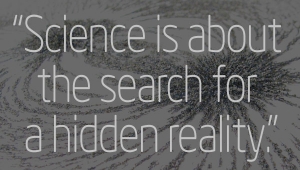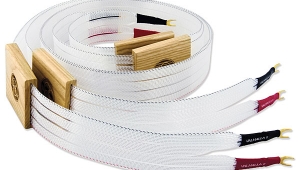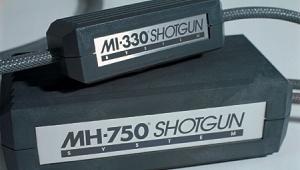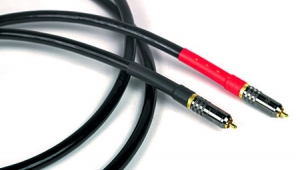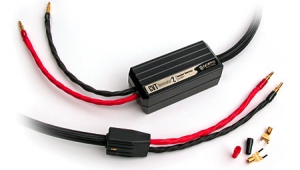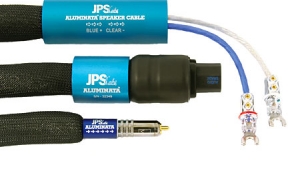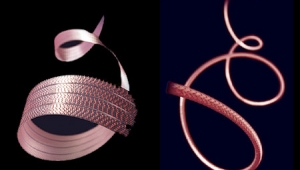| Columns Retired Columns & Blogs |
Synergistic Research cables Synergistic chez Damkroger
Synergistic chez Damkroger, January 1998 (Vol.21 No.1):
A couple of years ago I was assembling a review system around a pair of Magnepan MG3.5/R speakers and, because of their external crossover system, I didn't have speaker cables of the right lengths. I'd been favorably impressed with Synergistic Research's AC Master Coupler AC cord, so I decided to try the rest of their line. SR's approach is to match cables to specific classes of components and listener preferences, so I dutifully filled out the "System Diagnostic" form detailing my system (the Maggies, a VPI/VPI/Clearaudio analog front-end, Audio Alchemy digital gear, VAC CPA1 Mk.II preamp, Renaissance 70/70 amp) and the performance attributes that were important to me (all of them), and faxed it in.
Synergistic came up with a package consisting of AC Master Couplers, a Reference Digital Corridor digital cable, and Resolution Reference speaker cables and interconnects, the latter in both shielded and unshielded configurations. Sure enough, the cables worked beautifully in the VAC/Maggie system—so well, in fact, that when the Maggies were returned, I decided to try the cables with the next batch of review components. One thing led to another, and in the intervening two years I've found that the cables have performed beautifully with a wide variety of products—tube, solid-state, cones, panels, you name it—and have established themselves as one of my benchmarks.
So why have the Synergistics become a fixture in the reference and review systems at Casa Damkroger? First of all, they've excelled as a reviewer's tool, clearly revealing the characteristics of other components in the system and adding very little coloration of their own. On first listen they sounded unimpressive, so little did they contribute to the sound. They were completely free of the sort of spectacular colorations that can be initially captivating but quickly wear thin. For example, they never added zing or extra air to the top end, or exaggerated dynamic gradients in one part of the frequency spectrum. There were no unnatural, razor-sharp image edges or heightened, viewfinder-style front-to-back relief with these cables, no images moving forward during crescendos. Whatever the original acoustic environment, be it a small studio or huge all, it was reproduced faithfully.
The Synergistics never contributed to a system sounding dry or having a grainy texture, nor did they ever sound rolled-off at the frequency extremes, or closed-in, or slow and overly harmonically rich—just solid, powerful bass with excellent pitch definition and sweet, airy highs. They were certainly detailed, but in a natural way, with a balance of micro- and macro-detail in line with what I hear in a concert hall or club.
What's more, the interconnects and speaker cables seemed to straddle absolute neutrality: What minor colorations each had individually all but canceled each other out when the two were used together. Where the speaker cables might—and I stress might—have contributed to a slightly recessed perspective, the interconnects might have been a bit forward, a touch more midrange projection making the perspective seem slightly closer. Similarly, where the speaker cables shrank dynamic gradients slightly, the interconnects most definitely did not. The cables were designed and voiced together, so the synergism wasn't unexpected. But each of these products was sufficiently close to neutral to stand on its own.
Reviewing is one thing, but listening to music is really why the Synergistic cables have become a mainstay of my system. As I wrote this, the Synergistic cables (the interconnects now in their doubled-up Designers' Reference configuration) were feeding a fully balanced system consisting of a VPI TNT IV/JMW 12" tonearm/Clearaudio front-end, the VAC preamp, and Audio Artistry Dvoraks driven by VTL Ichibans and MB750s. It was a cloudy morning, and Classic's killer reissue of Ben Webster & Sweets Edison's Wanted to Do One Together (Columbia/Classic CS 8691) was playing. Try as I might to concentrate, I found myself getting sucked into the music, tapping my foot, and thinking about how natural and just plain right Sweets' trumpet sounded.
The Synergistics did most everything superbly, but a big part of what they did was to capture the natural feel of instruments in an ambient environment. In a concert hall or club, images aren't bounded per se but defined by their sizes, shapes, characteristics, and locations in space. With some (otherwise excellent) cables, Edison's trumpet (try "Embraceable You") seems to be bounded by a distinct, somewhat ragged surface, as if outlined in black Magic Marker. With the Synergistics, the discontinuous surface—that Magic-Marker line—was gone, leaving only the trumpet, clearly defined but completely coherent with the surrounding space.
Another plus was their superb reproduction of inner detail. On "First, We Take Manhattan," from Jennifer Warnes' Famous Blue Raincoat (Cypress 661 111-1), a good test for detail resolution is how clearly a component highlights the superimposed echo used to move Warnes' vocals into and out of the soundstage. The Synergistics took resolution it much, much further, revealing that virtually all the instruments are subject to similar if less obvious manipulations. The delicately plucked strings at the end of Navarra on the Albeniz side of the Reiner/Chicago Spain (RCA Living Stereo/Classic LSC-2230) were another great example: There were no discontinuous, specific edges, just wonderfully dimensional, distinct instruments, and an uncanny sense and feel of the surrounding space.
The Synergistics succeeded most of all by pulling the entire package together—detail, dimensionality, coherence with the surrounding space, and ambience reproduction—and combining it with their overall neutrality and superb reproduction of micro- and macrodynamic transients. Last weekend I picked up a mint, original copy of Van Morrison's T.B. Sheets (Bang BLP 400) at my next-door neighbor's garage sale. At the time, another (also excellent) speaker cable was in the system, and "Ro Ro Rosey" and "Brown Eyed Girl" sounded pretty much the way I'd always remembered: dull, thin, and nasal, the images one-dimensional and congested enough to sound nearly mono.
I switched to the Synergistics, and eureka! Dynamic transients snapped, guitars rang and resonated, vocals sang and breathed, and were attached to a real singer with real lungs! The images had body, weight, and dimensionality, and were even spread nicely across the stage center and layered front to back. A wonderful audiophile album for a buck? Well, not really, but a good illustration of how the Synergistics let through a little more of the magic—and why, after two years, they're still in my system.—Brian Damkroger
- Log in or register to post comments



